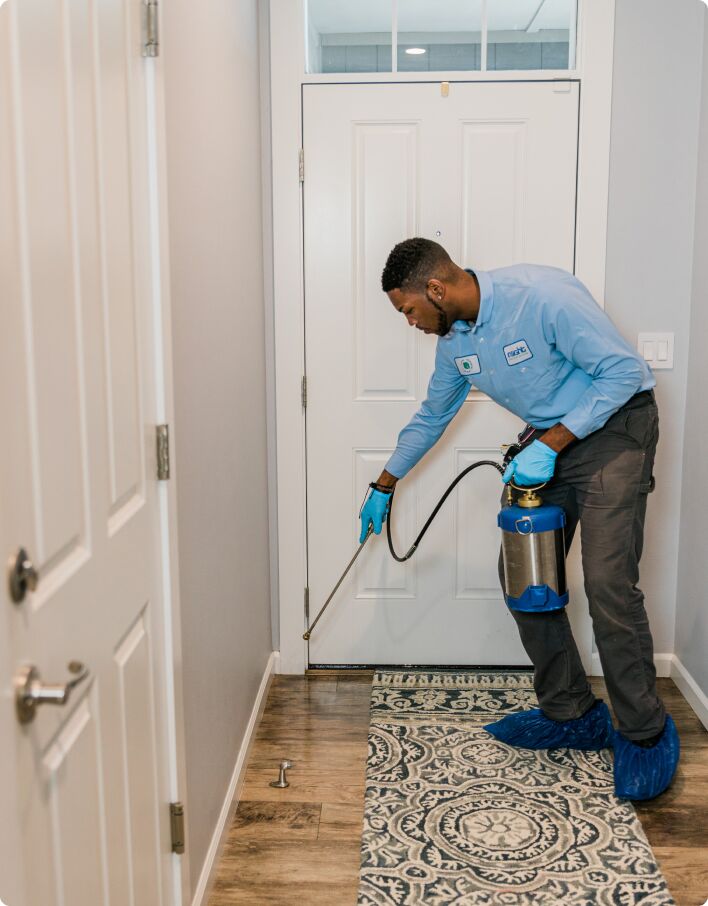Reliable A1 Bed Bug Treatment in Charlotte - Safe and Proven Methods
Reliable A1 Bed Bug Treatment in Charlotte - Safe and Proven Methods
Blog Article
Bed Bug Therapy Failure: Comparing Chemical Vs. Non-Chemical Solutions
In the world of insect control, specifically when handling the persistent problem of bed insects, the selection in between chemical and non-chemical treatment services can be an essential one. Both methods offer distinct benefits and downsides, influencing factors such as effectiveness, security factors to consider, and general cost. By examining the nuanced details of each method, a more clear understanding of which course to pursue in dealing with a bed pest invasion can be achieved.
Performance of Chemical Therapies
Chemical therapies for bed pest invasions have actually been commonly acknowledged for their powerful and quick efficacy in eliminating these insects. When taking into consideration the effectiveness of chemical treatments, it is vital to comprehend that they can provide a detailed and quick service to a bed insect issue. Specialist pest control men commonly rely upon insecticides to target bed bugs at various phases of their life cycle, consisting of grownups, eggs, and fairies. These chemicals typically function by interrupting the bed pests' nerves, bring about paralysis and eventual fatality.
Moreover, chemical therapies have the advantage of offering recurring impacts, implying that they can remain to eliminate bed insects even after the first application. This residual activity is especially advantageous in combating any kind of potential re-infestations. In addition, the rapid activity of chemical treatments can bring relief to people facing extreme bed bug invasions, allowing them to gain back control of their home swiftly.
Safety Worry About Chemical Solutions
One important aspect that calls for careful factor to consider when making use of chemical options for bed bug treatment is ensuring the safety and security of occupants and the atmosphere. Direct exposure to specific chemicals utilized in bed bug therapies can lead to respiratory issues, skin irritation, or various other adverse responses, specifically in people with pre-existing problems or sensitivities.
Furthermore, the ecological impact of chemical services is another considerable factor to consider. Some pesticides utilized in bed pest treatments might be damaging to helpful bugs, wildlife, and ecological communities if they leach into the dirt or water supply. It is important to make use of chemical therapies sensibly, following safety standards, and considering less toxic options to reduce these threats and make certain the reliable and secure administration of bed pest problems.
Benefits of Non-Chemical Approaches
Thinking about the potential safety and security problems and environmental effect associated with chemical services for bed insect treatment, discovering non-chemical strategies provides an appealing option with numerous unique advantages. Non-chemical treatments are eco pleasant, as they do not add to air or water air pollution, making them a lasting selection for pest control.
Additionally, non-chemical remedies can be effective in targeting bed bugs, including hard-to-reach locations where chemical treatments may not pass through. Techniques such as warm therapy, vacuuming, steam cleansing, and cushion encasements give thorough eradication without using damaging chemicals. In addition, non-chemical approaches can be much less disruptive, requiring minimal prep work and enabling for quicker reentry into treated locations. Overall, choosing non-chemical bed pest treatment approaches not just prioritizes safety and ecological protection but also makes sure extensive and reliable parasite control.
Limitations of Non-Chemical Treatments

In addition, non-chemical treatments often require numerous applications to accomplish effective elimination. This can be taxing and may not always ensure complete removal of all bed insects and their eggs, especially in hard-to-reach or concealed places.
In addition, the success of non-chemical therapies heavily relies upon correct execution bed bug removal and thoroughness, which can be testing for people without specialist knowledge. Poor application of non-chemical approaches may cause incomplete elimination, leading to persistent problems and the need for additional therapies.
As a result, while non-chemical therapies have their benefits, it is necessary to acknowledge these restrictions and consider them when establishing the most efficient technique for managing bed bug infestations.
Expense Contrast: Chemical Vs. Non-Chemical Options
Offered the restrictions connected with non-chemical check this site out treatments, an important facet to examine in the context of bed pest administration is the price contrast between chemical and non-chemical options. Chemical therapies normally entail the application of pesticides by experts, which can range from $250 to $900 per space, relying on the severity of the invasion and the dimension of the location to be dealt with. In contrast, non-chemical therapies like warmth therapy or heavy steam can be a lot more pricey, with prices ranging from $1,000 to $6,000 for a whole home. While the initial price of chemical treatments might seem reduced, multiple therapies might be needed to fully remove the invasion, possibly boosting the total cost. On the other hand, non-chemical options might supply an extra sustainable and environment-friendly solution, although they can be cost-prohibitive for some individuals. Ultimately, when thinking about the price of bed bug treatment alternatives, it is necessary to consider the ahead of time expenditures against the effectiveness and long-lasting sustainability of the picked technique.
Final Thought

Considering the possible safety and security worries and environmental influence associated with chemical services for bed insect therapy, discovering non-chemical techniques offers a promising option with numerous distinct advantages.Given the restrictions linked with non-chemical treatments, an essential element to review in the context of bed bug administration is the cost comparison in between chemical and non-chemical alternatives. In comparison, non-chemical therapies like warm treatment or steam can be a lot more costly, with prices ranging pest control expert from $1,000 to $6,000 for a whole home. While the initial expense of chemical treatments may seem reduced, numerous treatments may be needed to totally get rid of the infestation, potentially increasing the general price.In conclusion, when comparing chemical and non-chemical bed bug therapy options, it is crucial to take into consideration effectiveness, security, benefits, constraints, and expense.
Report this page